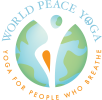Somatic Abolitionism
Somatic abolitionism is a practice that uses the body as a way to heal and transform, while also being a form of anti-racism and culture-building.
Somatic therapies are based on the idea that the body stores and expresses emotions and experiences, and that traumatic events or unresolved emotions can become trapped in the body. Somatic movement is a type of exercise that focuses on moving with full-body awareness and connecting emotions to physical feelings.
Dr. Resmaa Menakem coined the term Somatic Abolitionism. In his book, My Grandmother’s Hands: Racialized Trauma and the Pathway to Mending Our Hearts and Bodies he covers a variety of practices for embodied healing.
What Somatic Abolitionism Is
Somatic Abolitionism is living, embodied anti-racist practice and cultural building —a way of being in the world. It is a return to the age-old wisdom of human bodies respecting, honoring, and resonating with other human bodies. It is not a exclusively a goal, an attitude, a belief, an idea, a strategy, a movement, a plan, a system, a political position, or a step forward.
Somatic Abolitionism is not a human invention. It is the resourcing of energies that are always present in your body, in the collective body, and in the world. Somatic Abolitionism is an emergent process.
Somatic Abolitionism is a emergent form of growing up and growing into a more fuller energetic human experience.
Why We Need Somatic Abolitionism
Nearly all of our bodies—bodies of all culture—are infected by the virus of white-body supremacy.
This virus was created by human beings in a laboratory—the Virginia Assembly, in 1691—then let loose upon our continent. It quickly infected people of all culture and pigmentation, backgrounds, and economic circumstances.
Today, the WBS virus remains with us—in the air we breathe, the water we drink, the foods we eat, the institutions that govern us, and the social contracts under which we live. Most of all, though, it lives in our bodies.
What Somatic Abolitionism Does
Somatic Abolitionism heals our bodies of the WBS virus, and then inoculates our bodies against new WBS infections through cultural container building. It begins in your body, then ripples out to other bodies, and then to our collective body.
Somatic Abolitionism requires action—and repeated individual and communal practice. Through repetition, you collectively build resilience, discernment, and the ability to tolerate discomfort that comes with confronting the brutality of race.
Please watch/listen in on the following talks with Resmaa Menakem.
“In today’s America, we tend to think of healing as something binary: either we’re broken or we’re healed from that brokenness. But that’s not how healing operates, and it’s almost never how human growth works. More often, healing and growth take place on a continuum, with innumerable points between utter brokenness and total health.” -Resmaa Menakem
“Years as a healer and trauma therapist have taught me that trauma isn’t destiny. The body, not the thinking brain, is where we experience most of our pain, pleasure, and joy, and where we process most of what happens to us. It is also where we do most of our healing, including our emotional and psychological healing. And it is where we experience resilience and a sense of flow.” -Resmaa Menakem
“The answer to why so many of us have difficulties is because our ancestors spent centuries here under unrelentingly brutal conditions. Generation after generation, our bodies stored trauma and intense survival energy, and passed these on to our children and grandchildren. Most of us also passed down resilience and love, of course. But, as we saw with my grandmother—and as we see with so many other human beings—resilience and love aren’t sufficient to completely heal all trauma. Often, at least some of the trauma continues” -Resmaa Menakem
“All of this suggests that one of the best things each of us can do—not only for ourselves, but also for our children and grandchildren—is to metabolize our pain and heal our trauma. When we heal and make more room for growth in our nervous systems, we have a better chance of spreading our emotional health to our descendants, via healthy DNA expression. In contrast, when we don’t address our trauma, we may pass it on to future generations, along with some of our fear, constriction, and dirty pain.” -Resmaa Menakem
“Without inner change, there can be no change. Without collective change, no change matters.” -Angel Kyodo Williams
Healing is not a relationship between and expert and a problem…it is a relationship between human beings. In the presence of another whole person, no one needs to feel ashamed of their present pain or weakness and be separated from others by it. No one needs to feel alone and small. The wound in me evokes the healer in you and the wound in you evokes the healer in me” -Rachel Naomi Remen
Additional Resource
Nadine Burke Harris on Health and Trauma
